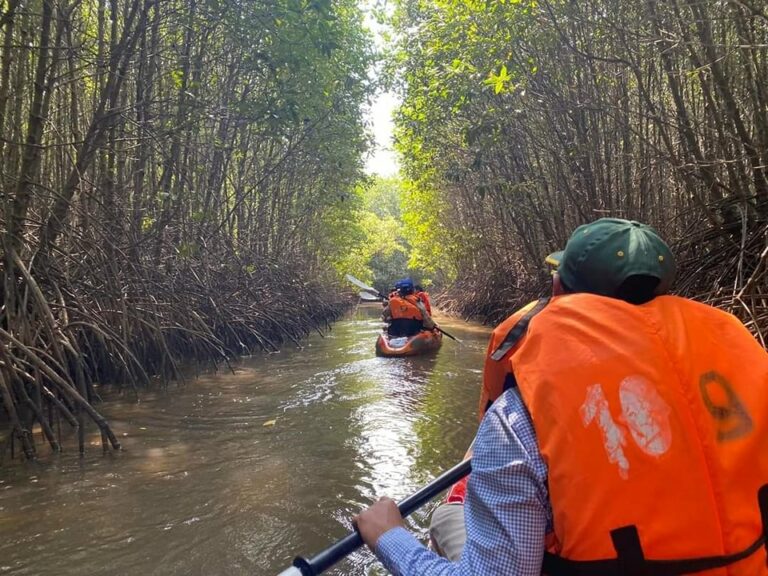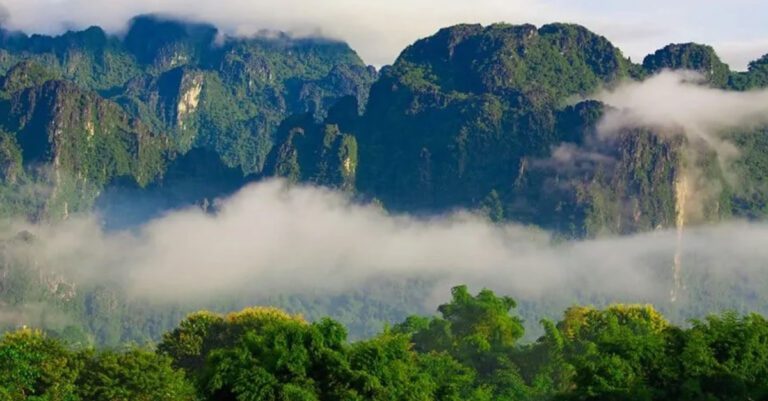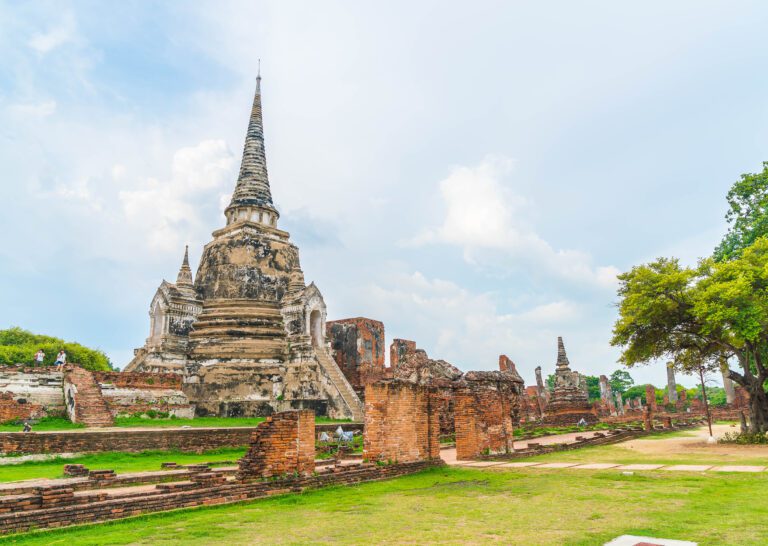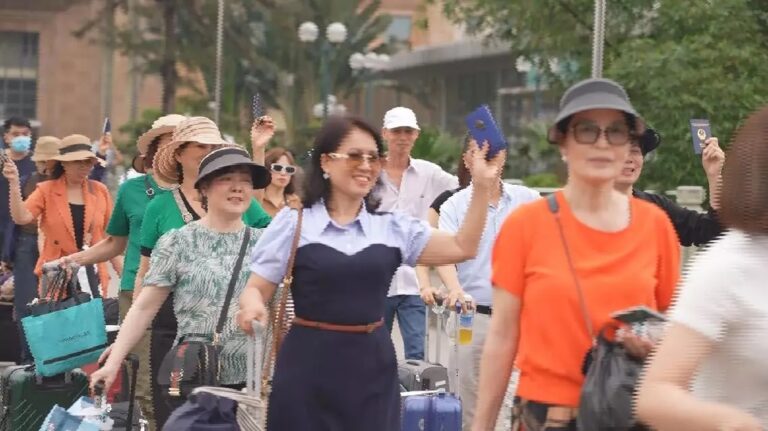
Image by J V Varaprasad from Pixabay
download link
The airline industry is leading the way in reopening tourism in the Mekong Sub-Region. Airline capacity among the Mekong member countries may be approaching pre-COVID levels, with Thailand and Vietnam outperforming Cambodia, Laos and Myanmar.
Last August 2022, we talked to Mayur “Mac” Patel, Regional Sales Director of global travel data provider OAG, and discussed how airlines and their destinations are facing the post-COVID future; how soon China will be back in the game; and his predictions for future air travel in the Mekong.
It’s been a roller-coaster two years for the travel industry. Can you can you compare the travel situation from like pre-pandemic to today?
Asia Pacific [responded] much later than Europe and the United States, because of the fragmented nature of the region’s economies, governments, policies and decision making. It’s not always a bad thing, because you can learn from other regions that opened up earlier.
From the 1st of April, when things started to open up in the region, we’ve seen a lot of growth. Vietnam, for example, is one of the bright spots in the Mekong region; we’ve seen a sharp recovery in terms of air capacity. Vietnam is tracking about 7.6% higher when you compare that to August 2019.
Capacity is where OAG data is quite useful, because it’s a proxy to the economic activity at a destination. The confidence that travel is returning can be seen in passenger bookings, how many airline seats are being put into the market, otherwise there wouldn’t be mounting capacities.
Bigger economies like China, as you know it’s still shut, and that’s predominantly a domestic market at the moment. They’ve got this circular economy working around that. Even the domestic capacity within domestic China, that’s also shrunk about 9% and that’s partially due to the sharp and sudden lockdowns from their dynamic zero-COVID policy.
if you look at neighboring countries around Mekong, Thailand is sort of growing at a slow pace, at 54% of air capacity restoration. Myanmar is about 38%. Laos is about 36%, and Cambodia is probably trailing behind at 27% of pre-COVID capacity levels.
Why is Vietnam doing really well? First, there’s a large domestic market; and second, they’ve actually pivoted away from Chinese traffic to new source markets like India. I think Thailand, over time, will gradually restore its capacity as more airlines will move in. Right now, you’ve got a lot of Northeast Asia carriers that are absent. And I think Thai Airways still hasn’t restarted all their services. So once that happens, the percentage will go up automatically.
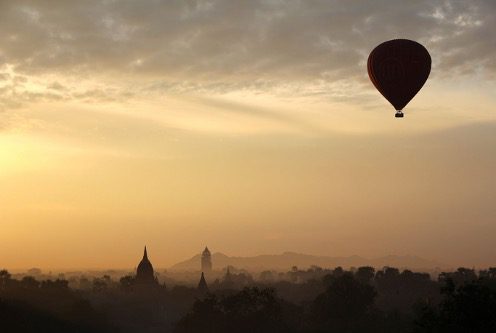
Image by Peggy und Marco Lachmann-Anke from Pixabaydownload link
Can you comment on the effect that the absence of Chinese inbound tourism has had on the rest of the Mekong region?
If you look at 2019 figures, China was a prominent source market for Mekong Region. Look at Thailand as a case in point – they had a lot of air service from China into secondary points of Thailand, and that constituted somewhere around 28% of the total traffic volume. So when you remove that, that puts a bit of a dent in your overall recovery profile. Without a broader China recovery, Asia will be trailing behind with the recovery numbers compared to 2019 levels.
That demonstrates the importance of China’s role in the region’s tourism sector. And we cannot neglect that, because I think China’s an important partner, neighbor, and source market for destinations to rejuvenate back to before.
China, once that opens up, it’s going to be very staggered; it’s going to be based on the friendly neighboring countries that have that reciprocal relationship, so to speak. And it’s probably going to be on a quota basis.
From your perspective, how have present global conditions affected regional travel in the Mekong?
We are seeing strong international traffic across the world; we’ve had pent up demand and revenge travel. But there are economic and political hurdles with Russia and Ukraine. And there will be some sort of a slowdown in economic activity through a pending recession in key long-haul markets over the next 6 to 12 months.
The recession will be caused by inflationary pressure, as well as high fuel prices for airlines. When airlines look at the destination, they also look at the yield they can generate from flying that particular route from the origin destination. If the fuel prices are high, the economics don’t make sense, so they pare back some of that frequency. This has an impact on the supply of seats into the destination.
If you couple that with network rebuilding, added cost to airline operations (inflation, interest rate, manpower issues, fuel prices),these are all factors that influence where airlines operate. And that has a big impact on secondary flights, especially to destinations in Laos and Cambodia – smaller economies that will be hit harder than bigger ones like Thailand or Vietnam.
You could probably see it in the numbers that are projected at the moment: Cambodia, Laos and Myanmar are trading way behind in terms of their recovery. They’re just scratching the surface, at around one third of the total capacity. That just shows you that impact that smaller economies will feel.
What’s the medium term prospect for Mekong’s more off-the-beaten-path destinations? What can they do to attract more airlines’ capacity?
The airlines are prioritizing their network based on the yield that they can achieve operating their flights. So they think that the demand level of the supply to a particular point such as Myanmar, Laos and Cambodia is not significant.
They will trend much lower on the list, unless destinations are willing to engage with the airlines and say, “look, we are opening up these incentives that we can provide to the airlines to come back.” That changes the dynamics, because there’s a lot of economic pressure on airlines that dictate which routes they want to prioritize, which which particular destinations they want to get into first.
I’ll ask you to put on a policy-maker’s hat for a bit: speaking from your perspective, a someone who follows global air travel trends, are there any particular policies that you would like Mekong countries to adopt?
I think a coordinated approach would be quite ideal. So that will allow a standardized protocol across all the member countries. You’ve got Mekong Tourism Coordinating Office working with Vietnam, Thailand, Myanmar, Laos, Cambodia and China; this facilitates a coordinated approach in terms of reopening and protocols that may be needed in any future crisis.
In particular, I think a coordinated approach on visa application to access those countries is important. And making it more affordable. From a policy perspective, if you charge too much, people will get deterred from visiting that destination.

Photo by Markus Winkler on Unsplash
download link
I don’t know how far forward you can project, but what will international travel into Mekong countries look like in the next few years? What kind of patterns can you discern from present trends?
I’m quite outwardly optimistic and noticeably nervous about some of the economic pressures that exist. So I think it’s going to be a long road to recovery. So moving from a 30% to to 60% [capacity], that would take some time because that would require a lot of thinking around airlines’ capacity to rebuild, given the manpower shortage.
Their priority could be on different destinations that are more profitable than serving some of the secondary points in their network, for example. Do they have the bandwidth to service those destinations? There’s a lot of different bits that go into decision making.
And I think it’s quite vital for destinations to engage with the airlines, to have that conversation when they’re rebuilding the capacity. So a proactive approach from destinations would actually help raise the profile of the destinations desire to actually increase some of that capacity. That’s tracking at a very slow pace over a period of time. So I think I think the key is to actually have the dialogue with airlines, with the destination perspective in mind.
